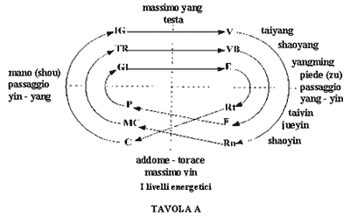PHYTOBIOENERGY
FBE
Presentation
FRA.SE method
 Valves
Valves
PHYTOBIOENERGY: FRA.SE METHOD
What is considered to be of fundamental importance in
Phytotherapy is the concept of Phytocomplex. Test results show that the
single active principles have a lesser effect than those of the full
range of substances found in the plant.
PHYTOCOMPLEX supplies those materials, depleted through
energy consumption, which keep the body metabolism active.
Lab test results, supplied by traditional phytotherapy in which fresh or
dried plants are used, remain effective even when it comes to
hydroalcoholic extracts as long as this does not change the phytocomplex
of the plant.
Studies on these test results outlined the organotropism of the various
plants along with those of their E.I. counterparts.
Further considerations have correlated the organotropism of the E.I. to
around about the same level as acupunture so, in the same range as the
various ORBIS contained in the FRA.SE chart. (see follow up)
The FRA.SE.chart is made up of 12 circular fields or ORBIS
placed around a circumference; in each of these fields the corresponding
meridian acupunture can be found.
The FRA.SE.chart, once the altered meridian has been targeted, (or
SOURCE ORBIS) helps to choose the most suitable E.I. so as to balance
both said meridian and those energetically connected. Each ORBIS is
flanked by an E.I.
The FRA.SE. Chart is a GEOMETRICAL-MATHMATICAL ALGORITHM which, if
applied correctly, (see fundamental practical rules) leads to a natural
respect of the laws relating to energy (table A) without necessarily
having any specific knowledge of acupuncture.
Defining SOURCE ORBIS (most altered meridian) can be done in three
different ways; LINEAR SYMTOMATOLOGY CODE (table B) BIOELECTRONIC
DIAGNOSIS or KINESOLOGY.
BASIC PRACTICAL RULES
Once SOURCE ORBIS (SO-corresponding to the most altered
meridian) has been established, another three ORBIS must be selected (
corresponding to those meridians which have been altered due to SO
imbalance). These are indicated in a set position on the FRA.SE. chart
as opposed to SO and are as follows:
ORBIS diametrically opposed to SO.
ORBIS preceding SO
ORBIS following SO.
The choice of these four ORBIS (and therefore the EI corresponding to
these) will lead to the balancing of A,B,C, and D. The doses of E.I. to
be used can be seen in brackets.
A= BALANCING MERIDIAN POLARITY ( 10 drops.)
Energy balance yin (negative-cold) or yang (positive-hot) of the
selected meridian such as SOURCE ORBIS.
B= ADDITIONAL BALANCING (10 drops.)
Balances two meridians diametrically opposed on the chart in compliance
with the LAWS of OPPOSITION and INTERACTION BETWEEN YIN and YANG.
C= LOCULUS BALANCING ( 5 drops.)
Balances two meridians of opposing characteristics but which share the
same loculus according to the LAWS of EMBRYONIC AFFINITY.
D= FULL-BODIED BALANCING. (5 drops.)
Balances B and A according to the LAWS of ENERGETIC
LEVEL
CHOOSING E.I. TO ASSOCIATE WITH EACH ORBIS.
Once the ORBIS in the FRA.SE. chart has been identified, the most
suitable E.I.for each is chosen by applying the GENERAL
SYMPTOMATOLOGICAL CODE.
TO SUM UP, PROCEED AS FOLLOWS:
A= BALANCING MERIDIAN POLARITY ( 10 drops.)
B= ADDITIONAL BALANCING (10 drops.)
C= LOCULUS BALANCING ( 5 drops.)
D= FULL-BODIED BALANCING. (5 drops.)
The drops are to be taken twice a day (morning and
evening) diluted in just less than half a small glass of water.

Up
PHYTOBIOENERGETIC FRA.SE: THE VALVES
A recent evolution in Phytobioenergetics FRA.SE. uses particular
valves of crushed plants; the same used to make the 18 TM subject to this
report. These valves can be used in Phytobioenergetic FRA.SE. in the same
way as TM as long as the PHYTOCOMPLEX of the plant is preserved and,
furthermore, the same quality control described for TM can be applied.
The valves contain 20 mg. of crushed plant and around 10 mg. of fructose.
Fructose, electromagnetically treated, (ecchymerization) stablizes the
biophotonic characteristics of the crushed plant.
The box, with a mirror effect inside, protects the bottle (containing the
valves or theTM) from external electromagnetic pollution thus protecting
the ecchymerization.
For a perfect equivalence, following the the lab test results with both
preparations, the valves must be taken as follows:
• First dose (morning)
1 valve corresponding to SOURCE ORBIS + 1 valve corresponding to ORBIS
SUPPLEMENTARY BALANCING.
• Second dose (evening)
1 valve corresponding to the LOCULUS BALANCING +1 valve
corresponding to the FULL-BODIED BALANCING.
In the following summary, the TM and VALVE codes are outlined.
|
Code
TM
|
Code
Valves
|
Botanical name
|
|
AGM
|
AGMO |
Abuta
Grandifolia (Mart.) Sandwith
|
|
ACV |
ACVO |
Adiantum
Capillus Veneris L. |
|
ACW |
ACWO |
Alchornea
Castaneifolia (Willd.) Juss. |
|
ABK |
ABKO |
Aristiquietia
Ballii Kung Et Roxb. |
|
BS |
BSO |
Buddleja
Sp. |
|
CPK |
CPKO |
Cheilanthes
Pruinata Kaulf |
|
CDM |
CDMO |
Croton
Draconoides M. Arg. |
|
HAM |
HAMO |
Heliotropium
Angiospermum Murray |
|
LMW |
LMWO |
Lepidium
Meyenii Walp. |
|
MSB |
MSBO |
Minthostachys
Setosa (Briq.) Epl. |
|
MVB |
MVBO |
Muehlenbeckia
Volcanica (Benth.) Endl. |
|
OMR |
OMRO |
Oenothera
Multicaulis R. Et P. |
|
PNL |
PNLO |
Phyllanthus
Niruri L. |
|
SML |
SMLO |
Schinus
Molle L. |
|
SPL |
SPLO |
Schkuhria
Pinnata (Lam.) Kuntze |
|
SAK |
SAKO |
Stachys
Arvenis Kunth. |
|
TIR |
TIRO |
Tessaria
Integrifolia R. Et. P. |
|
UTW |
UTWO |
Uncaria
Tomentosa (Willd.) Dc |
|
Up
Back
Download printable pdf version
>>
italian
version >>
Online Shop |


